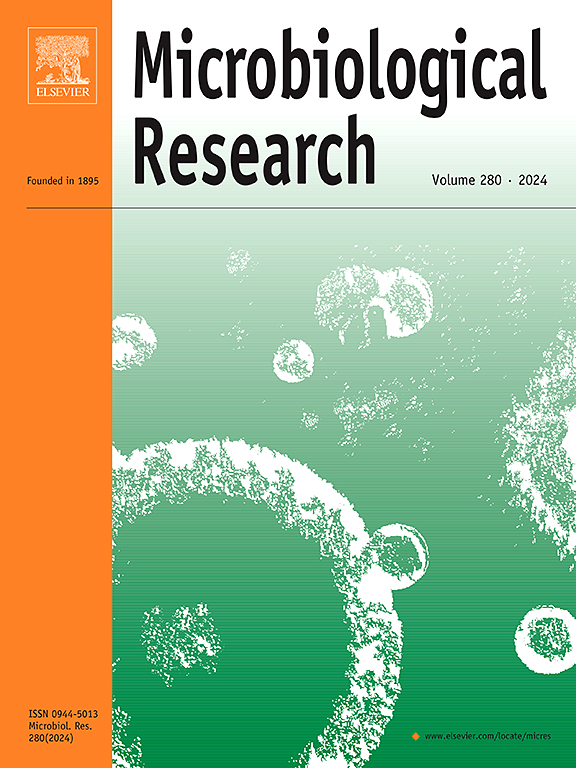Transcriptomic analysis of sub-MIC Eugenol exposition on antibiotic resistance profile in Multidrug Resistant Enterococcus faecalis E9.8
IF 6.1
1区 生物学
Q1 MICROBIOLOGY
引用次数: 0
Abstract
The spread of multidrug-resistant (MDR) bacteria and their resistance genes along the food chain and the environment has become a global threat aggravated by incorrect disinfection strategies. This study analysed the effect of induction by sub-inhibitory concentrations of eugenol – a major ingredient in clove essential oil commonly used in disinfectant agents – on the phenotypic and genotypic response of MDR Enterococcus faecalis E9.8 strain, selected based on the phenotypic response of other enterococci. Eugenol treatment irreversibly reduced several antibiotics’ minimum inhibitory concentration (MIC), confirmed by kinetic studies for kanamycin, erythromycin, and tetracycline. Furthermore, transcriptomic analysis indicated the reversion of antibiotic resistance through direct and indirect measures, such as down-regulation of genes coding for proteins involved in antibiotic resistance, toxin resistance and virulence factors. Regarding antibiotic resistance genes (ARGs), ten differentially expressed genes (five down-regulated and five up-regulated genes) were related to the main transporter families, which present key targets in antibiotic resistance reversion. Our study thus highlights the importance of considering indirectly related genes as targets for antibiotic resistance reversion besides ARGs sensu stricto. These results allow us to propose using eugenol as an antibiotic resistance reversing agent to be included in disinfectant solutions as an excellent alternative to limit the spread of MDR bacteria and their ARGs in the food chain and the environment.
亚mic丁香酚暴露对多重耐药粪肠球菌E9.8抗生素耐药谱的转录组学分析。
多药耐药(MDR)细菌及其耐药基因在食物链和环境中的传播已经成为一种全球性威胁,不正确的消毒策略加剧了这种威胁。本研究分析了丁香酚亚抑制浓度对耐多药粪肠球菌E9.8菌株表型和基因型反应的诱导作用,丁香酚是消毒剂中常用的丁香精油的主要成分。丁香酚治疗不可逆转地降低了几种抗生素的最低抑制浓度(MIC),卡那霉素、红霉素和四环素的动力学研究证实了这一点。此外,转录组学分析表明,通过直接和间接措施,如下调与抗生素耐药、毒素耐药和毒力因子相关的蛋白质编码基因,抗生素耐药性得以逆转。在抗生素耐药基因(ARGs)方面,10个差异表达基因(5个下调基因和5个上调基因)与主要转运蛋白家族相关,是抗生素耐药逆转的关键靶点。因此,我们的研究强调了除了严格意义上的ARGs外,考虑间接相关基因作为抗生素耐药性逆转靶点的重要性。这些结果使我们能够提出将丁香酚作为抗生素耐药性逆转剂加入消毒剂溶液中,作为限制耐多药细菌及其ARGs在食物链和环境中传播的绝佳替代方案。
本文章由计算机程序翻译,如有差异,请以英文原文为准。
求助全文
约1分钟内获得全文
求助全文
来源期刊

Microbiological research
生物-微生物学
CiteScore
10.90
自引率
6.00%
发文量
249
审稿时长
29 days
期刊介绍:
Microbiological Research is devoted to publishing reports on prokaryotic and eukaryotic microorganisms such as yeasts, fungi, bacteria, archaea, and protozoa. Research on interactions between pathogenic microorganisms and their environment or hosts are also covered.
 求助内容:
求助内容: 应助结果提醒方式:
应助结果提醒方式:


